|
|
Post by SP 9811 on May 28, 2007 13:07:49 GMT -5
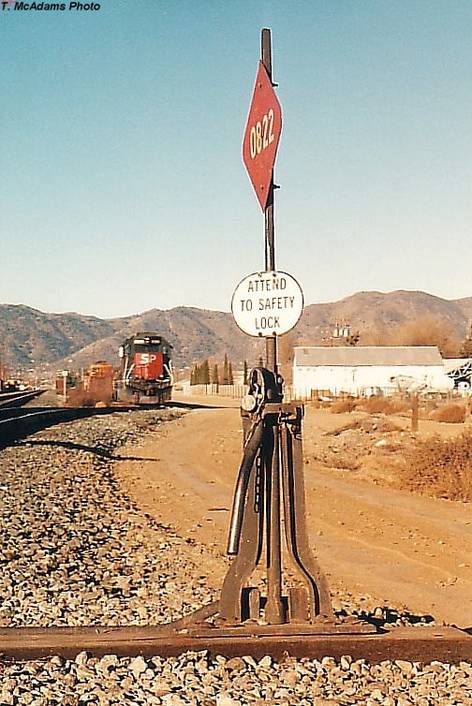 At Tehachapi. 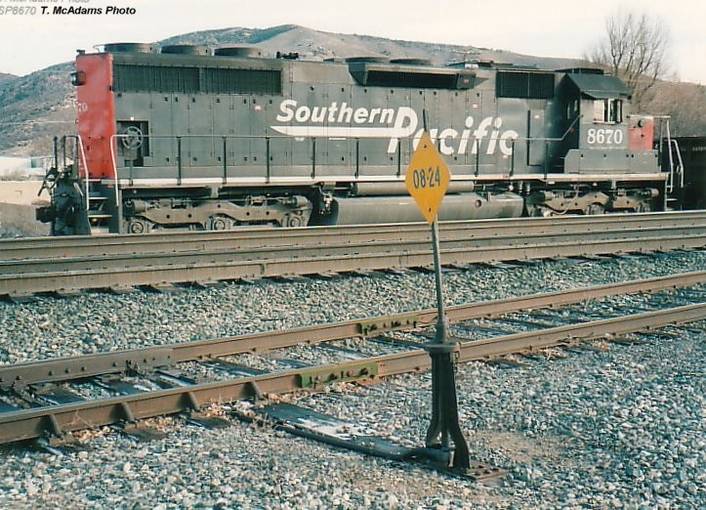 SD40M-2 8670 and a switch stand near Monolith CA. 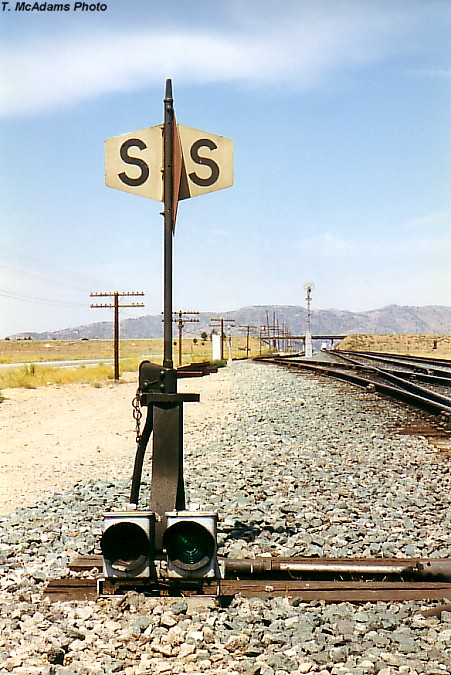 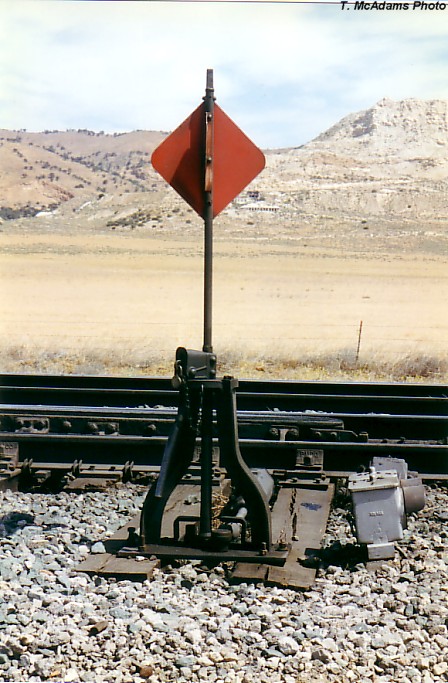 Spring switch at Tehachapi summit. 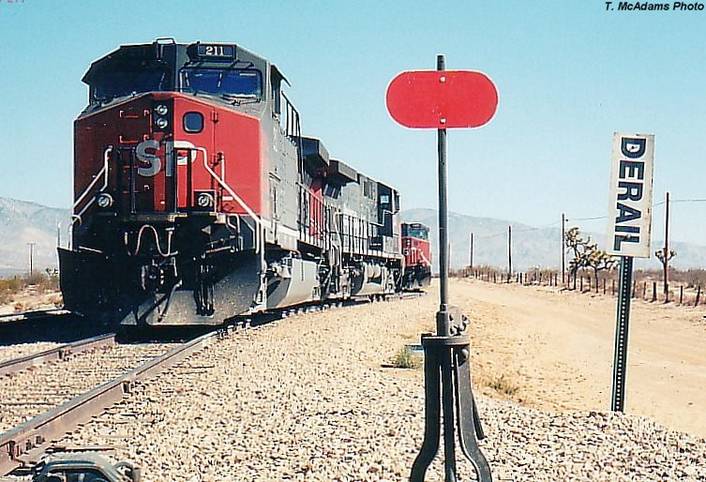 Derail stand, near Fleta, outside of Mojave CA Thom |
|
|
|
Post by thespcaboose on May 28, 2007 14:28:07 GMT -5
Cool photos Thom. Also, if you have any SPINS (Southern Pacific Industrial Number System) the top photo is in zone 8 and is track 22 thus the 0822 at the top of the switch stand.
|
|
|
|
Post by SP_SD9 on May 29, 2007 8:03:05 GMT -5
Cool photos Thom. Also, if you have any SPINS (Southern Pacific Industrial Number System) the top photo is in zone 8 and is track 22 thus the 0822 at the top of the switch stand. Thanks for the clarification of the numbers, wondered about that for a long time... Regards, René |
|
|
|
Post by SP 9811 on May 29, 2007 9:44:53 GMT -5
Very good info Gary, thanks!
|
|
|
|
Post by thespcaboose on May 29, 2007 9:46:04 GMT -5
Your welcome Rene. I was lucky enough to see a SPINS list many years ago.
|
|
|
|
Post by SP_SD9 on May 29, 2007 11:05:32 GMT -5
Your welcome Rene. I was lucky enough to see a SPINS list many years ago. Now I'll have to get a copy myself. Have seen them on the big auction site but never paid any attention. Regards, René |
|
|
|
Post by thespcaboose on May 29, 2007 16:47:46 GMT -5
Your welcome Thom. I forgot to mention it earlier, but when the local crew heads out for their work and time, the numbers on the SPINS list is a six digit number. Digits 1 & 2 are the zone, digits 3 & 4 are the track, with digits 5 & 6 are the spot. Using the top photo again, for the crew the SPINS number might come out looking 082206 on the crews list which means zone 8 track 22 spot 6. Sometimes the spot number will be posted on the side of a building. It's normally on a blue colored plaque with white numbers.
|
|
|
|
Post by SP 9811 on May 30, 2007 10:37:13 GMT -5
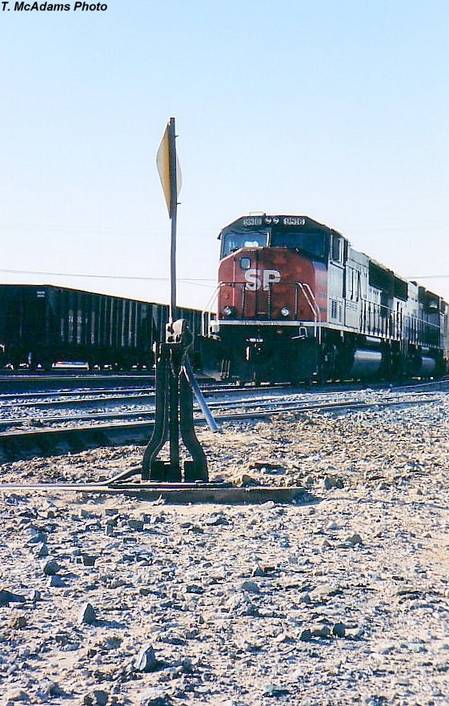 Stand in Mojave Yard. 9816 looks on. 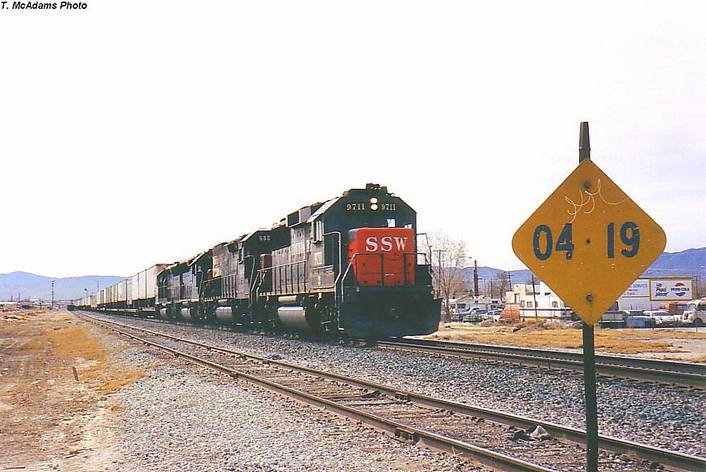 SSW 9711 west at Lancaster. |
|
|
|
Post by SP_SD9 on May 30, 2007 11:33:47 GMT -5
Brings up the next question: When are (were) the shields red and when yellow?
Regards,
René
|
|
|
|
Post by thespcaboose on May 30, 2007 11:58:41 GMT -5
I've only seen the red shields. It was 1986 when I first started looking at them. Perhaps another member can answer when the yellow shields were in place.
|
|
|
|
Post by johncarr on May 31, 2007 15:02:30 GMT -5
Let me see if I can dust of a few of my old brain cells and provide more information on SP switch stands. Those with diamond shaped plates were equiped with switch locks. Red plates were on the main line and yellow plates were on sidings. Those with round plates were in yards or trackage off the main line or a siding and didn't have switch locks. Derails had the oval shaped plate and as far as I can remember always were red. Switches that were close to highway crossings had an added safety device and a small plate as show on your first picture at Tehachapi. At the base of the switch stand was an additional bar from the switch points and a hook to secure the points in the main line position. To open the switch and move into the siding or spur, you had to unlock the switch lock and move the hook out of the safety lock. These safety locks were added after several accidents where a train would hit an automobile at the crossing and the automobile would knock down the switch stand and cause the points to move. The train would then derail at the switch. With the safety lock, the switch stand could get knocked down, but the points would remain in the main line postion. In CTC territory there could also be a timing device that had to be opened and activated before you could throw the switch, but you didn't have a picture of one of these. Hope this helps, John Carr in Dallas, Texas www.carrtracks.com |
|
|
|
Post by thespcaboose on May 31, 2007 16:14:31 GMT -5
Thanks John. Yours is a better discription than I could give. You filled in a lot of the blanks that I didn't know.
|
|
|
|
Post by thespcaboose on Jun 11, 2007 15:25:24 GMT -5
Getting back to the SPINS list for a minute Rene, it will also come with a list of the customers in the area that Southern Pacific served.
|
|
|
|
Post by MWBridgwater on May 24, 2009 22:56:52 GMT -5
Regarding red versus yellow diamond-shaped targets: I know that in Claremont, Calif., where I grew up, the SP/former PE line had a red one off the main to a siding. An industrial spur then immediately branched off the siding, and it was marked with a yellow one (I was able to take the switchstand with the red target home with me when the line was removed in the '80s  . |
|
|
|
Post by thespcaboose on May 25, 2009 19:18:29 GMT -5
Very cool Mark. It's always nice when you're able to get a souvenir like that!
|
|